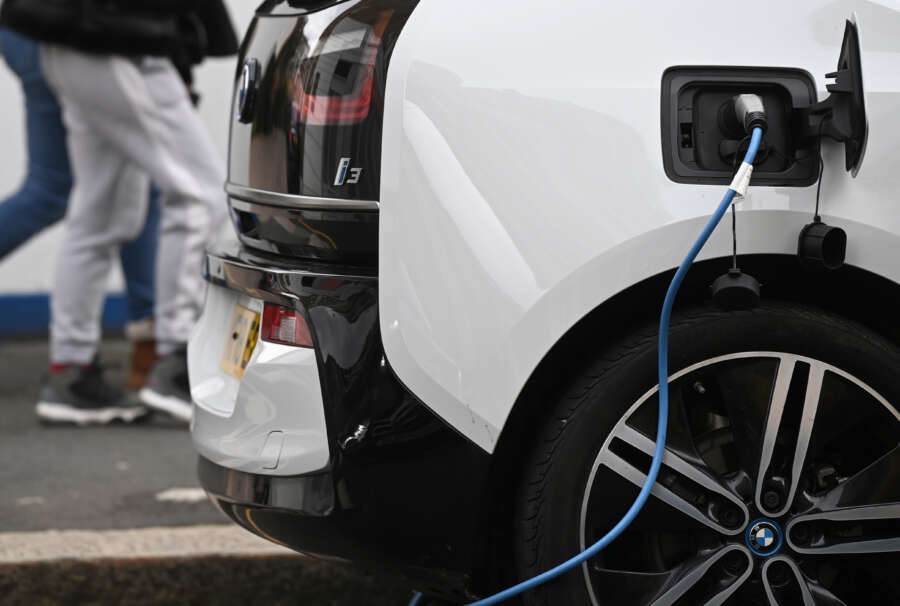
Gustavo Marqueta, group business development director of WN VTech, shares his insight on the state of the global EV market and explores why some countries still have some way to go on their electrification journeys.
With a growing number of countries committing to achieving net-zero emissions by 2050, there is mounting pressure on governments and businesses, as well as people’s general mindsets, to be more willing to embrace sustainable technologies. Now is a crucial time for businesses, governments and customers alike consider their carbon footprints.
Globally, the transport sector continues to be a key driver of carbon emissions, and a sector that requires innovation and ingenuity to become more sustainable. According to the European Environment Agency, transport is responsible for about a quarter of the EU’s total greenhouse gas (GHG) emissions, and continues to cause significant air and noise pollution, leading to health and environmental risks.
The added pressure of increasing fuel prices, as a result of events like the Russian invasion of Ukraine, have had a knock-on effect on supply chains. So, manufacturers are looking towards electrification and electric vehicle (EV) technology to shape the future of transport.
Last year, EV sales broke records, exceeding 10 million globally, with 14% of all new cars sold being electric – a 5% increase from 2021. The result was more than 26 million electric cars on the roads in 2022 (a 60% uptick from a year prior). The public transport sector in particular make great strides towards sustainability goals. According to Zemo, In 2022, 50% of new registrations of medium to heavy-duty buses in the UK were zero emissions, with 30% of all bus sales being electric in the wider EU. The statistics speak for themselves. Vehicle electrification is on the rise, but some markets are still cautious about embracing the sector and implementing the necessary facilitators to allow electrification to flourish.
Which markets are most open to electrification?
Some markets have already demonstrated a commitment and openness to electrification.
Norway and Sweden are both examples of countries that have been introducing successful net-zero government policies.
Norway and Sweden – a shining example
Within the market, Norway and Sweden are pioneers in deploying the grants and subsidies needed to move towards a more sustainable future of vehicle electrification.
Sweden has plans to build the world’s first electric motorway by 2025, which will allow electric cars to recharge as they pass the road surface. Strong commitments like these from the Swedish government demonstrate a dedication to making electric vehicles an accessible and practical solution to people’s future transportation needs.
Similarly, Norway boasts the highest share of new EV purchases worldwide, with 50% of its overall car sales made up of zero-emission vehicles. The successful adoption and rollout of EVs in Norway has largely been the result of strong government commitments, with the government rolling out the ‘50% rule’ whereby a 50% discount is granted for EV drivers in parking fees, road tolls and ferry charges that was implemented in 2017. Additionally, in 2018, the government introduced a further incentive of a 40% reduction for company car tax for EVs.
Setting targets in the EU
The need for and value of electric vehicle technology has also been recognised by the EU, reflected in their target for all new cars sold to have zero emissions from 2035. In Germany and the Netherlands, towns and cities have made commitments to electrification and there is wide cultural investment in the development and use of green technologies.
Markets that have adopted and invested in the EV market successfully have done so by approaching the problems from a wide, large-scale perspective but crucially, they have recognized the ground-level investment and cultural backing that the industry needs for the public as well as businesses to get on board with.
What challenges are facing the market and how can they be overcome?
Globally, there are several obstacles that face the EV industry that are preventing the industry, in some markets, from taking off.
Range anxiety:
Range anxiety refers to the fear of battery power running out before reaching the destinations, which is still a hotly debated subject debated by governments and businesses when committing to vehicle electrification. So, the development of higher-capacity, fast-charging batteries with longer ranges will help to alleviate these fears and help to enhance overall user experience. Lightweighting vehicles can also help to optimise the capacity of batteries. It’s essential for engineers and EV developers to reassure cautious stakeholders through continually striving for the most innovative and cost-effective tech solutions.
Battery technology:
Undoubtedly battery technology has rapidly improved in recent years, yet we still need to appreciate that there is room for further advancement. Continual research into better-performing, more affordable, and sustainable battery solutions will act as reassurance to more cautious markets and countries and encourage them to embrace vehicle electrification more widely.
Government support:
Another challenge for the market is the need for greater support from governments. In particular, better, long term funding is needed to help roll out electric fleets and keep them on the road. Without financial commitment, it’s difficult to deploy the new technology, as the cost of the return investment is still unclear.
Costs:
Upfront costs of EVs are still often higher compared to traditional internal combustion engine vehicles. However, with advancements in technology and economies of scale, the cost of EVs is gradually decreasing – a trend that should continue as more markets embrace EVs more widely. Government incentives such as tax credits and subsidies, can help to reduce the price gap and make EVs more affordable for consumers.
How does the UK compare?
In the United Kingdom, there has been some initial government funding, including an allocated £381 million Local Electric Vehicle Infrastructure (LEVI) fund. However, the incentives need to be accelerated to continue the development and deployment of the technology. Schemes such as the ZEBRA funding to support the roll-out of electric buses in England need to be adapted to be more agile to help support not only the large group operators, but also the SMEs.
The availability and accessibility of charging infrastructure also remain a challenge in the UK. Private stakeholders and the government still need to invest in the expansion of charging networks in urban areas, commercial buildings and car parks to make the use of EVs more accessible to both rural and urban areas.
What does the future of the global EV market look like?
It’s safe to say that the future of the EV market is full of opportunity and room for growth. However, it’s crucial that governments, decision-makers and business leaders collaborate to overcome the challenges that still face the sector.
Despite the various challenges that the sector still needs to address, countries like Norway and Sweden and examples of how a collaborative approach by governments, businesses, and the public can result in an impactful shift in the way EVs are used and perceived.
As business leaders and engineering pioneers, we need to continuously work towards developing the most forward-thinking tech capabilities of EV’s. Development of EVs needs to be done with the customer always front of mind, to ensure that the everyday user of EVs know that their needs are being met, as well as the wider carbon-reduction initiatives that remain a compelling case for the need for change.
About the author:
Gustavo Marqueta is the group business development director of WN VTech. The WN VTech Group has recently supplied a fleet of innovative demand-responsive-transport (DRT) zero-emission buses in Gothenburg thanks to the close collaboration of the public and private sectors. WN VTech works at lightweight vehicles to ensure that they use the optimum battery capacity that supports the required vehicle range as part of its vision to make vehicles both more sustainable and accessible.


